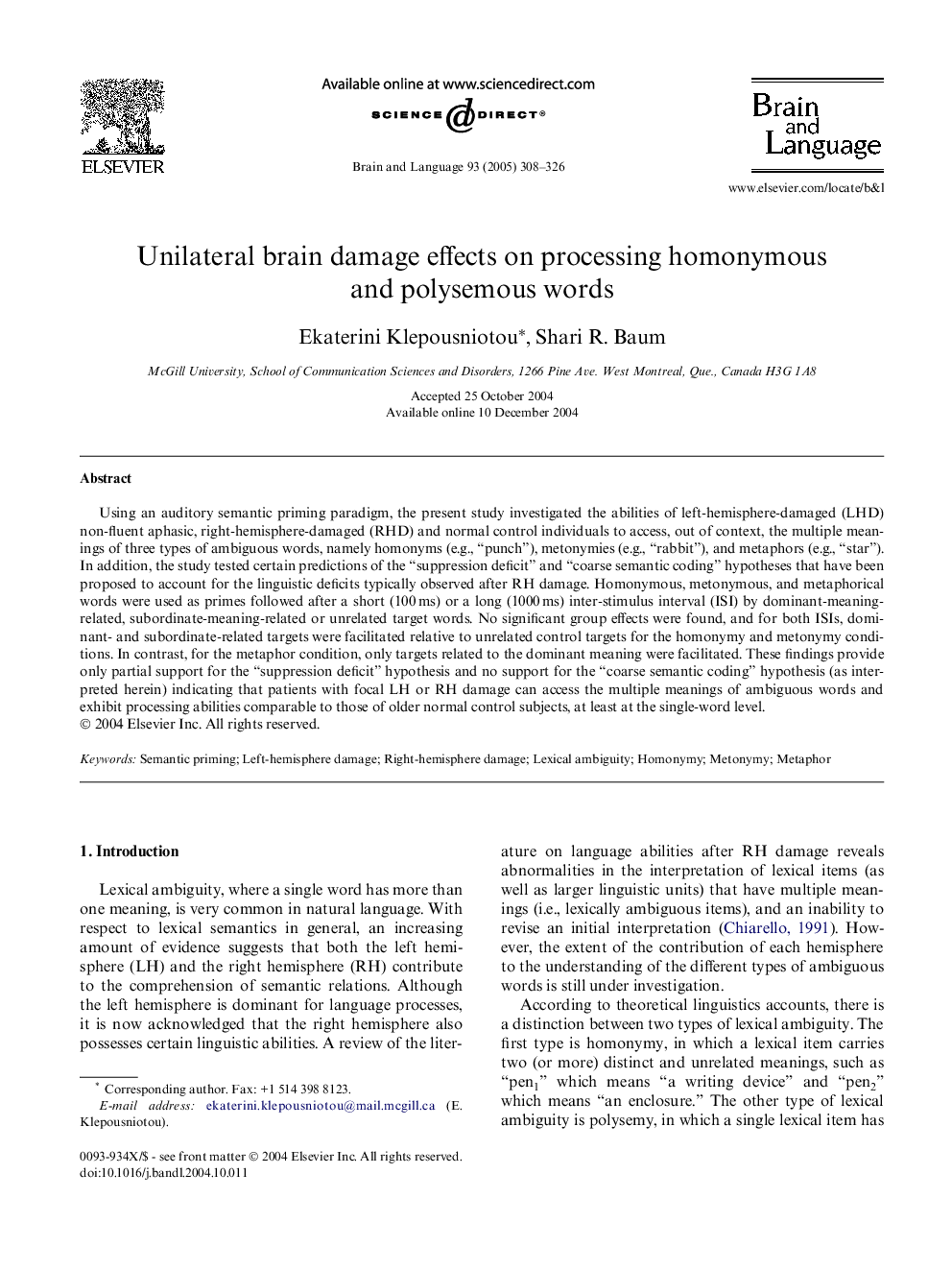| Article ID | Journal | Published Year | Pages | File Type |
|---|---|---|---|---|
| 10456869 | Brain and Language | 2005 | 19 Pages |
Abstract
Using an auditory semantic priming paradigm, the present study investigated the abilities of left-hemisphere-damaged (LHD) non-fluent aphasic, right-hemisphere-damaged (RHD) and normal control individuals to access, out of context, the multiple meanings of three types of ambiguous words, namely homonyms (e.g., “punch”), metonymies (e.g., “rabbit”), and metaphors (e.g., “star”). In addition, the study tested certain predictions of the “suppression deficit” and “coarse semantic coding” hypotheses that have been proposed to account for the linguistic deficits typically observed after RH damage. Homonymous, metonymous, and metaphorical words were used as primes followed after a short (100Â ms) or a long (1000Â ms) inter-stimulus interval (ISI) by dominant-meaning-related, subordinate-meaning-related or unrelated target words. No significant group effects were found, and for both ISIs, dominant- and subordinate-related targets were facilitated relative to unrelated control targets for the homonymy and metonymy conditions. In contrast, for the metaphor condition, only targets related to the dominant meaning were facilitated. These findings provide only partial support for the “suppression deficit” hypothesis and no support for the “coarse semantic coding” hypothesis (as interpreted herein) indicating that patients with focal LH or RH damage can access the multiple meanings of ambiguous words and exhibit processing abilities comparable to those of older normal control subjects, at least at the single-word level.
Related Topics
Life Sciences
Neuroscience
Biological Psychiatry
Authors
Ekaterini Klepousniotou, Shari R. Baum,
